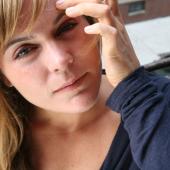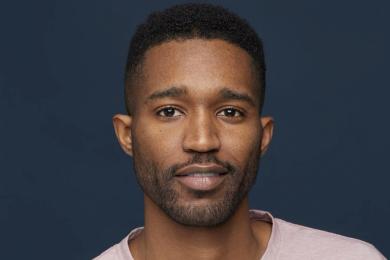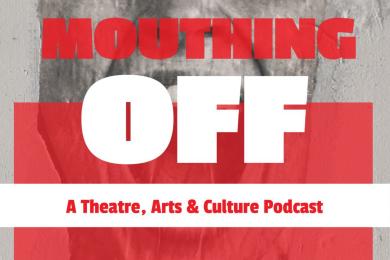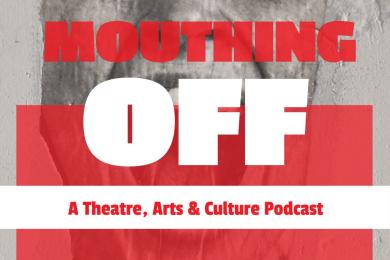Speaking rhythm and dance with RHYTHMICALLY SPEAKING
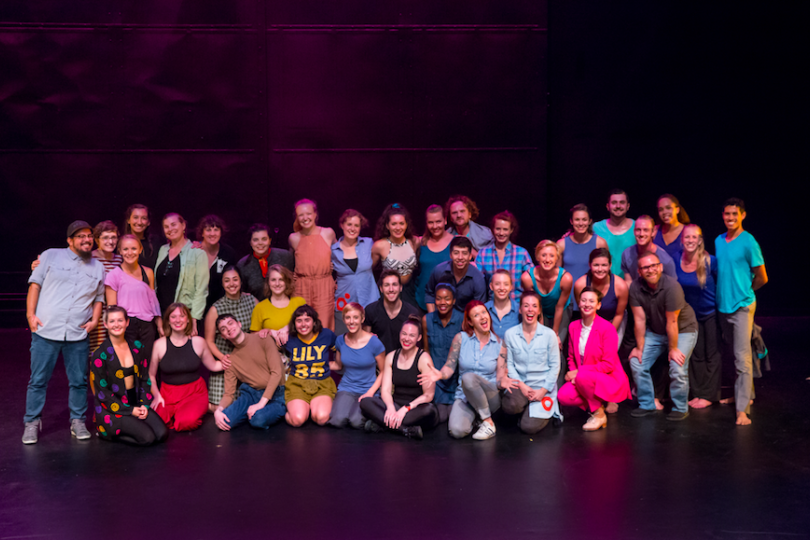
Over the past ten years, Rhythmically Speaking Dance has supported and presented new work driven by a wide array of American vernacular dance ideas, from classic jazz to rhythm tap to contemporary urban approaches and many perspectives between. They are proud to be a leading local and national voice in the conversation exploring and defining “American vernacular dance.” Rooted in the uniquely human behaviors of social interaction, rhythmic exploration and appreciation of groove, staged work in these forms is uniquely positioned to explore these shared human experiences. Dedicated to supporting practitioners, educating audiences and celebrating rich history while nurturing innovation through performance, Rhythmically Speaking has been touted by Dance Magazine as “revitalizing jazz dance in the Twin Cities area,” and has presented 83 original and remounted works and engaged 350+ artists and thousands of audience members since its founding in 2008.
Accolades aside, Rhythmically Speaking’s annual production has become a highly anticipated staple of the Twin Cities dance scene, bringing the community a taste of the best local and national choreographers, and this being the 10th anniversary installment, I wanted to get a little bit deeper into the origin story of this Twin Cities favorite. I had the pleasure of posing some candid questions to RS Artistic Director, Erinn Liebhard, searching for some answers on how the company was created and inspired, where they’ve come in the last ten years, and setting goals for the future. She let me in on some fun and personal stories as well as imparting some philosophical insight into the world of dance, collaboration, and community inclusion.
Tell us a little bit about yourself and how and why you became a dancer?
I like to say that I became a dancer for a couple reasons: for starters, my folks noticed I liked to play dress up and put me in dance because they thought I'd like the costumes. Turns out, I really just like dancing! I also grew up social dancing at my dad's rock band's gigs, pulling anyone who would follow me out onto the dance floor to get our groove on. Might sound silly, but I believe this had a huge impact on my interests in dance, as today, I'm focused in teaching, creating, performing and writing about staged dance inspired by social dance forms. In addition to my work as the Artistic Director of Rhythmically Speaking, I currently teach at Winona State University and Zenon Dance and for the Cowles Center, perform with Afro-Brazilian contemporary company Contempo Physical Dance and make my own choreographic work (primarily in bars and social spaces!). I also perform as self-created character "Nerdette" at St. Paul Saints Baseball games (alongside by husband who plays "The Nerd"!), which has been an awesome way to stretch my abilities in improvisation and physical comedy.
What was your inspiration to start your own company? Was there something in the local dance community that either was lacking or needed growth that you felt compelled to raise the proverbial bar?
Rhythmically Speaking did indeed start out as a response to what co-founder Heather P. Westerlund and I observed as a need in our dance community - a space for people to make what (at the time we called) "jazz and rhythm-driven dance." Over the course of time, in an effort to get clearer about what we were trying to make space for, our terminology shifted from that to "jazz and American vernacular" and to what I am now considering: "inspired by jazz and American social dance ideas." Despite verbiage shift, the goals have always been the same, to build community among people who share an interest in dance forms with rhythm, social interaction and improvisation at their core. As dancers interested in this kind of work, we saw this need firsthand when the Twin Cities biggest and most nationally reputable jazz company, JAZZDANCE by Danny Buraczeski, disbanded a year or two before we graduated from our university dance program. Having spent two years looking for existent opportunities to serve these interests, we became moved to develop our own projects that would support ourselves and other choreographers interested in this kind of work, with the hope that it would ripple out into further impacts - and it has :)
Talk a little more about the term "American Vernacular Dance;" it's evolution as a genre, and how your dancing, choice of pieces and choreographers represent it.
Oh, there is so much here! We recently held an event in partnership with the Cowles Center called "Critical Conversations: What IS American Vernacular Dance?" My interest in this language came out of my time in grad school, when I was more actively connecting with others across the nation with my interests. Many of them were using this term, and it's also used in music academia (i.e. "American Vernacular Music." Many folks who move in jazz dance circles inform this term with information from seminal Marshall and Jean Stearns text "Jazz Dance: The Story of American Vernacular Dance," in which the authors define "vernacular" as “something native and homegrown.” I also like the consideration of "vernacular" as defined by Merriam Webster (I'm paraphrasing their definition here): "developed in normal rather than formal scenarios and traceable to a particular time and place." To me, applying this term within "American vernacular dance" means the kinds of dance that has developed in informal social scenarios in the United States - things like jazz, tap and hip-hop styles. Another point of question with this term, which we discussed at our event, is "what constitutes 'American'"? In this usage scenario, would it be more specific to say "vernacular dance of the United States?" Another complication is that truly nothing that has developed here could have done so without ideas coming in from a multitude of other places, specifically a heavy emphasis on recognizing the deep roots of the African diaspora in our social dance practices. I have been moving toward using the language "staged dance inspired by jazz and other American social dance ideas." This specifies that we support the creation of concert dance inspired by these ideas, and I think the term "social" is easier to understand than the term "vernacular." With use of this language, I always seek opportunities to continue the discussion of the root forms, and how these forms impact and are impacted by our socio cultural history/ies in the United States. As far as how this translates to the stage, we seek each year to represent a wide swath of what "American vernacular dance" could mean, looking to assemble a collection of dances and people that bring that discussion to the stage.
How has your company grown over the last 10 years and what would you like to see more of in the future?
In the last ten years, we went from putting on a show with the lint in our pockets, and lots of love, to having established a highly-professional and anticipated annual production that we offer the best compensated open-application commission of any choreographic opportunity within this genre of dance in the entire country. Our commission amount is also among the most competitive of any similar opportunity in any genre of dance in our state, and we are really proud of that. In these ten years, we developed a board, became a fiscally sponsored project of Springboard for the Arts, expanded our programming to include workshops and other events, and a couple years ago, moved into being a 501(c)3 nonprofit. I have learned SO much about community organizing and administration over these years, and I am very grateful I can apply my energy to my own projects and priorities, which in turn creates opportunities for others who share my interests! I am excited to see where the future goes . . . having hit 10 years of our major programming existing within the same format, I am making moves to shake things up in ways that better support initiatives for both local and national artists (right now our annual production supports primarily local artists and one national guest), as well as the creation of my own choreographic work, which also provides opportunities for dancers and audiences interested in the aesthetic approaches we support.
It is clear to me that Ms. Liebhard has a passion for her work and reaching out to people through education and dance. She’s interested and excited about fostering pieces that are accessible to everyone and if you have the chance to see the show this weekend I highly recommend it. Rhythmically Speaking 10/2018, is running August 16-18 at The Southern Theater, and as aforementioned, marks 10 years of RS supporting and presenting original works by local and national artists inspired by American vernacular dance (now I have a clearer understanding of what that is). This year’s choreographers, through their own unique perspectives, carry on the organization’s decade long tradition of exploring the subtleties of the human condition through dance and the show will be tied together with reflective video vignettes celebrating the 10 year milestone. The choreographers featured on this show are local artists Gabriel Anderson & Laura Selle-Virtucio, Leila Awadallah, Melissa Clark, Karla Grotting, Jolene Konkel, Emma Marlar, and Liebhard will also be presenting a new work. The show will also spotlight work by Brandi Coleman, a Dallas, Texas-based choreographer. For more information on the company and this year’s artists can be found at www.rhythmicallyspeakingdance.org/rs-102018/

